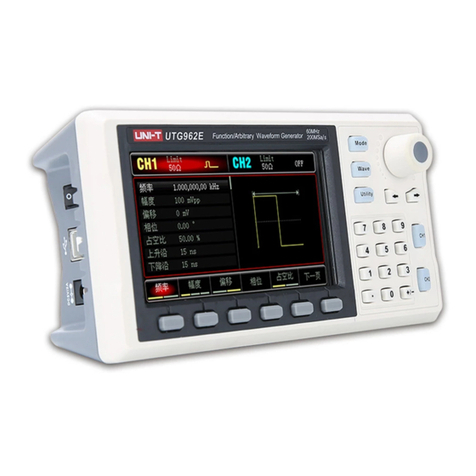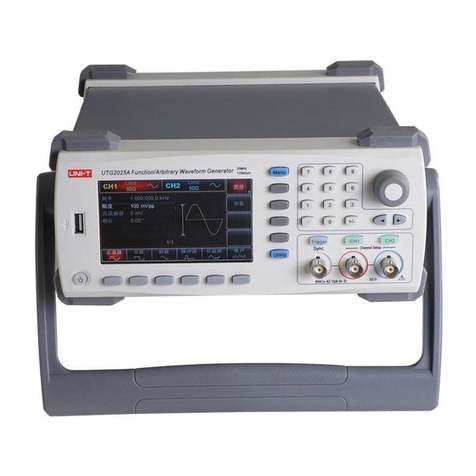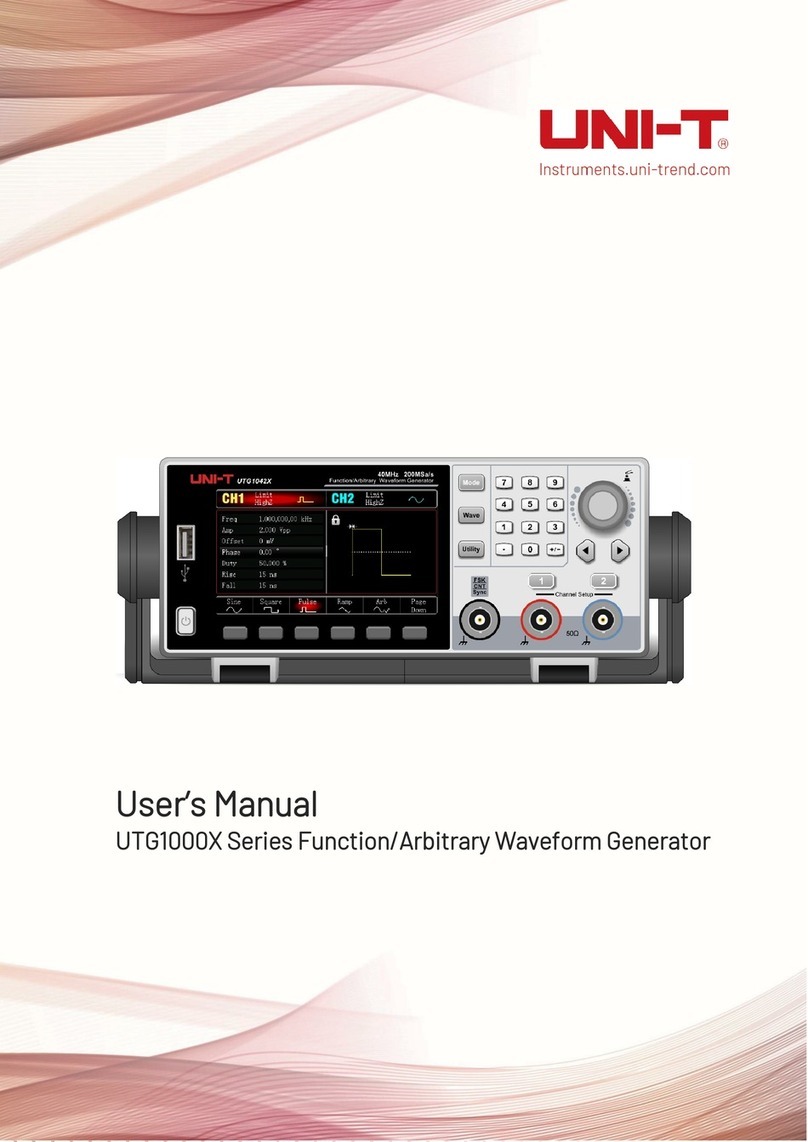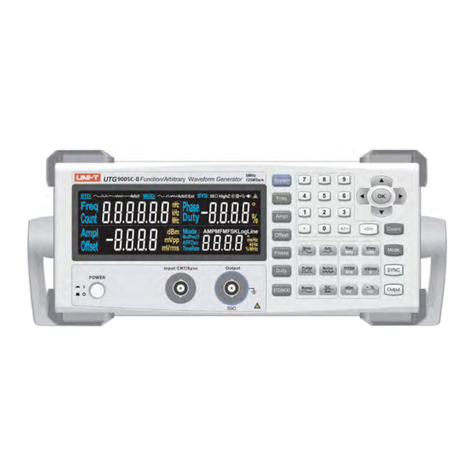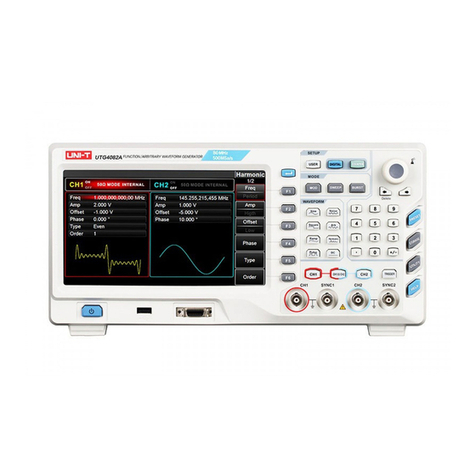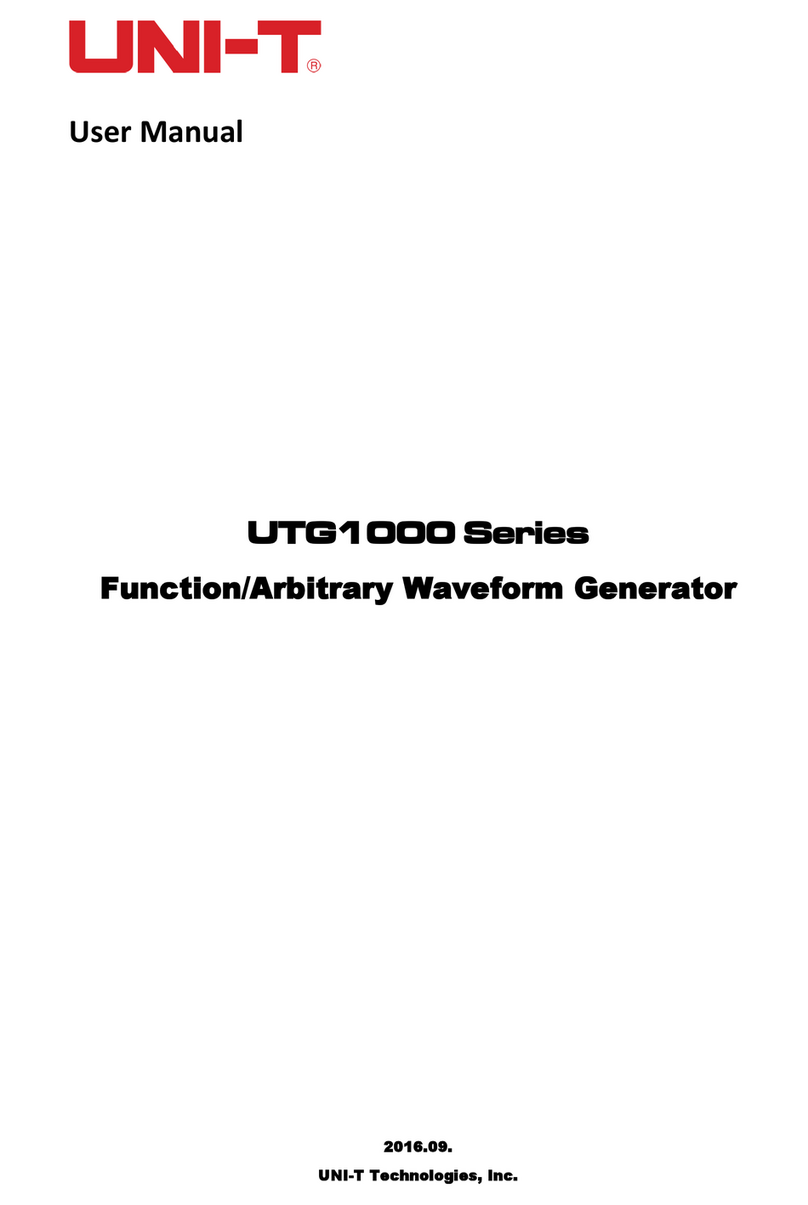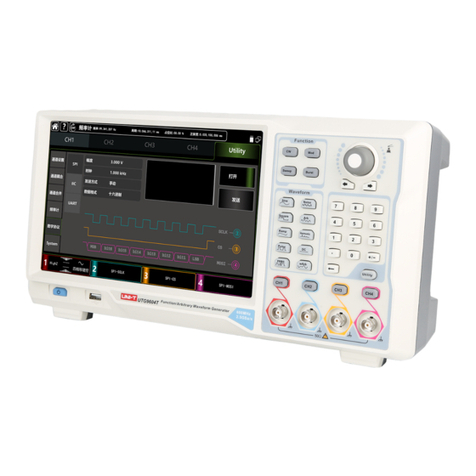
UTG2000B Series 5
Table of Contents
Preface.................................................................................................................................................. 3
Copyright Information.......................................................................................................................... 2
Introduction ......................................................................................................................................... 4
Table of Contents ................................................................................................................................. 5
Chapter 1 Safety Information ............................................................................................................... 7
1.1 Safety Terms and Symbols...................................................................................................... 7
1.2 General Safety Overview........................................................................................................ 7
Chapter 2 Quick Start ........................................................................................................................... 9
2.1 General Inspection ................................................................................................................. 9
2.1.1 Check for Damages Caused by Transport .................................................................... 9
2.1.2 Check Accessories ....................................................................................................... 9
2.1.3 Machine Inspection..................................................................................................... 9
2.2 Handle Adjustment................................................................................................................. 9
2.3 Panels and Buttons............................................................................................................... 10
2.3.1 Front Panel ................................................................................................................ 10
2.3.2 Rear Panel.................................................................................................................. 11
2.3.3 Function Interface ..................................................................................................... 11
2.4 Basic Waveform Output ....................................................................................................... 12
2.4.1 Set output frequency ................................................................................................ 12
2.4.2 Set output amplitude ................................................................................................ 13
2.4.3 Set DC offset voltage ................................................................................................. 13
2.4.4 Set square wave ........................................................................................................ 14
2.4.5 Set pulse wave........................................................................................................... 14
2.4.6 Set DC offset voltage ................................................................................................. 15
2.4.7 Set ramp wave........................................................................................................... 15
2.4.8 Set noise wave........................................................................................................... 16
2.4.9 Set harmonic Wave ................................................................................................... 16
2.4.10 Set expression ......................................................................................................... 17
2.5 Set utility .............................................................................................................................. 19
2.5.1 Set channel................................................................................................................ 19
2.5.2 Channel coupling....................................................................................................... 21
2.5.3 Frequency meter ....................................................................................................... 22
2.5.4 Network..................................................................................................................... 22
2.5.5 System ....................................................................................................................... 23
Chapter 3 Advanced Applications ...................................................................................................... 26
3.1 Generate Modulation Waveform ......................................................................................... 26
3.1.1 Amplitude Modulation (AM) ..................................................................................... 26
3.1.2 Frequency Modulation (FM)...................................................................................... 32
3.1.3 Phase Modulation (PM)............................................................................................. 39
3.1.4 Amplitude Shift Keying (ASK)..................................................................................... 46
3.1.5 Frequency Shift Keying (FSK) ..................................................................................... 51
3.1.6 Phase Shift Keying (PSK) ............................................................................................ 56
3.1.7 Binary Phase Shift Keying (BPSK)............................................................................... 62

